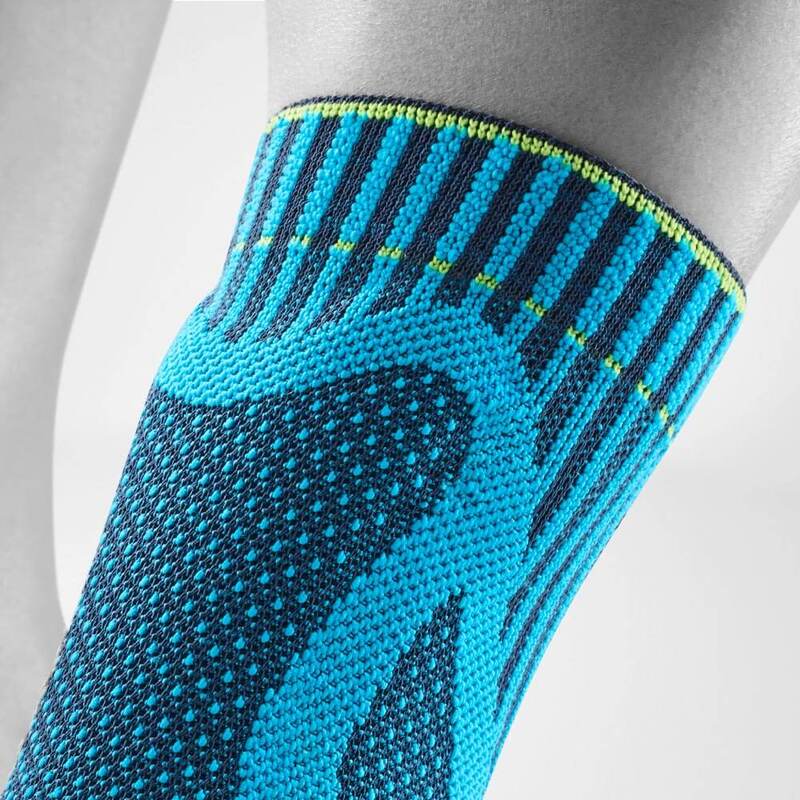對許多慢跑者來說,伸展運動就像繫緊跑鞋和時不時沉重的雙腿一樣,是跑步的一部分。在這篇文章中,我們想看看跑步後伸展時應該注意什麼,以及我們認為哪些運動最適合它。
拉伸或不拉伸 – 這取決於

對許多運動員來說,伸展運動並不是他們最喜歡的活動之一。這就是為什麼訓練計劃中經常缺少它,特別是對於業餘跑步者來說。如果您屬於這個群體,但想改變這一點,我們可以為您提供一些建議,幫助您養成伸展習慣。
我應該多久伸展一次?
就像生活中的許多事情一樣,答案是:這完全取決於情況。例如,一個很大的區別在於你自己的目標,你想透過伸展達到什麼目的。如果您的肌肉縮短或想要預防它,每天伸展兩到三次甚至是有意義的。為了保持肌肉柔軟,每週伸展3次是一個不錯的數字。
我什麼時候該拉伸?
訓練前,你應該只短暫地保持這個姿勢,「熱身」並動員肌肉,而不是「施壓」它。劇烈運動後不要立即伸展。好的時間是白天的休息時間,例如晚上看電影、聽音樂或播客時。將伸展運動視為一項單獨的訓練課程,而不是令人討厭的「附加項目」。
我應該花多長時間進行拉伸訓練?
同樣,這一切都取決於目的,取決於你想透過伸展達到什麼目的。始終專注於特定的肌肉群,例如臀部周圍的肌肉。然後節目持續約 20 分鐘。為了在訓練前後放鬆,也可以進行五分鐘的伸展運動。
靜態伸展與動態伸展
拉伸效果的一個主要區別在於拉伸時處理肌肉的方式。這可以透過兩種方式發生:
靜態伸展:在靜態伸展中,伸展保持一定時間(例如15-30秒)並重複兩到三次。它的特別目的是降低肌肉張力。它的目的是幫助防止肌肉縮短並加速再生。因此,它非常適合跑步後的拉伸,但在衝刺之前往往會適得其反。
動態伸展:在動態伸展中,肌肉不是不斷地拉伸,而是透過「彈跳」再次伸展和放鬆。它旨在增加肌肉張力,因此對於舉重運動員*或短跑運動員*等快速力量運動員*特別有用,可以幫助肌肉為各自的活動做好準備。跑步後主要目的是減少肌肉的殘餘張力,因此不宜進行動態伸展。

拉伸時要特別注意什麼
與任何運動一樣,伸展也是如此:了解運動的具體目標,慢慢來並確保正確完成。
伸展有一些基本規則:
不要「冷」伸展:當您將肌肉置於「緊張」狀態時,肌肉應該已經變暖了。因此,如果在訓練前進行伸展運動,應先做短暫的暖身(步行或小跑5-10分鐘)。
不要猛烈地拉伸:請緩慢而小心地拉伸。急拉可能會傷害肌肉。
避免疼痛:拉伸時大幅度拉扯是可以的,但不要拉伸得太過分,以免感到疼痛。
保持背部挺直:背部挺直可以確保您正確地進行鍛鍊並真正伸展您想要伸展的肌肉。
大負荷後不要立即拉伸:半程馬拉鬆或間歇跑等大負荷後,肌肉中會累積大量乳酸。那麼拉伸甚至會導致肌肉損傷。
這些練習非常適合跑後伸展

小腿上部肌肉(腓腸肌)進行長距離弓箭步,並將手臂靠在牆上或樹上。雙腳指向前方。將身體重量轉移到前腿上,並將後腿的腳跟放低到地面。伸展後腿,直到感覺到小腿上部肌肉被伸展。
小腿下部肌肉(比目魚肌)的練習與上一類似。進入輕步姿勢和非常輕的蹲姿。將後腿的腳跟放在地板上,彎曲膝蓋,直到感覺到小腿有伸展感。
腿筋(坐骨肌)站直。要伸展大腿後側,請保持雙腿伸展。例如,上身向前彎曲,直到指尖接觸地板,這會對大腿產生明顯的伸展。有幾種變化,例如雙腿交叉伸展和伸展腿向前伸展。

股四頭肌(股四頭肌)伸展運動中最經典的動作之一!站直並將腿向後彎曲。用手臂將其進一步拉向臀部。重要提示:擁抱腳踝而不是腳!髖屈肌(髂腰肌) 採取一個超大弓步,前腿的小腿和大腿之間形成 90° 角,而後腿的腳後部放在地板上。深深吸氣和呼氣,每次呼氣時多伸展一點。臀肌(梨狀肌) 站直。將小腿放在支撐腿的大腿上。彎曲你的腿,使膝蓋向外。稍微彎曲,對膝蓋施加輕微的壓力,以伸展臀肌。如果做得正確,你的姿勢就像“4”,這個練習就像瑜珈中的“鴿子”。























